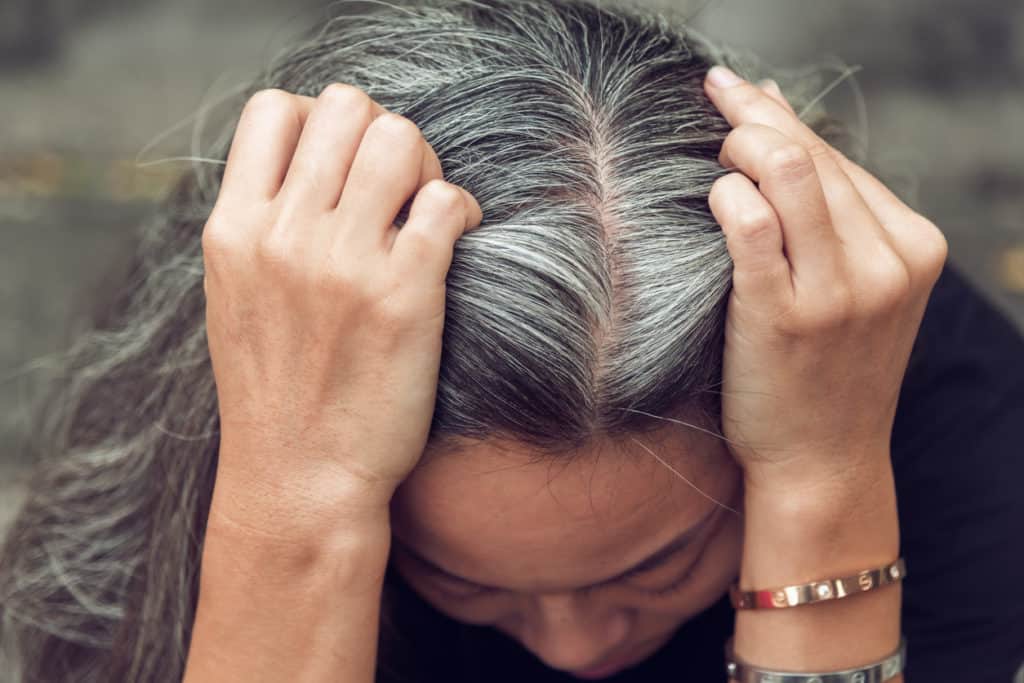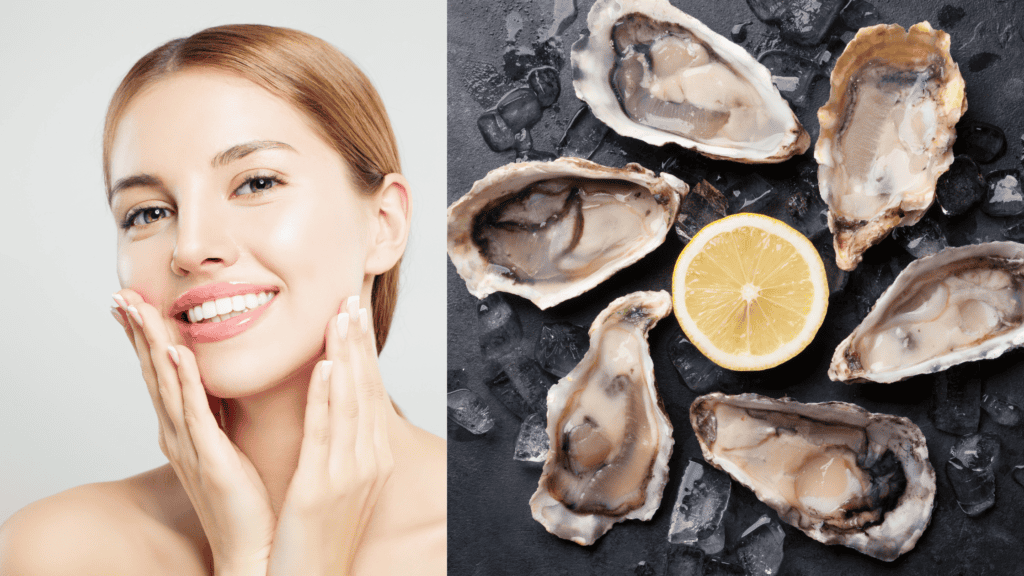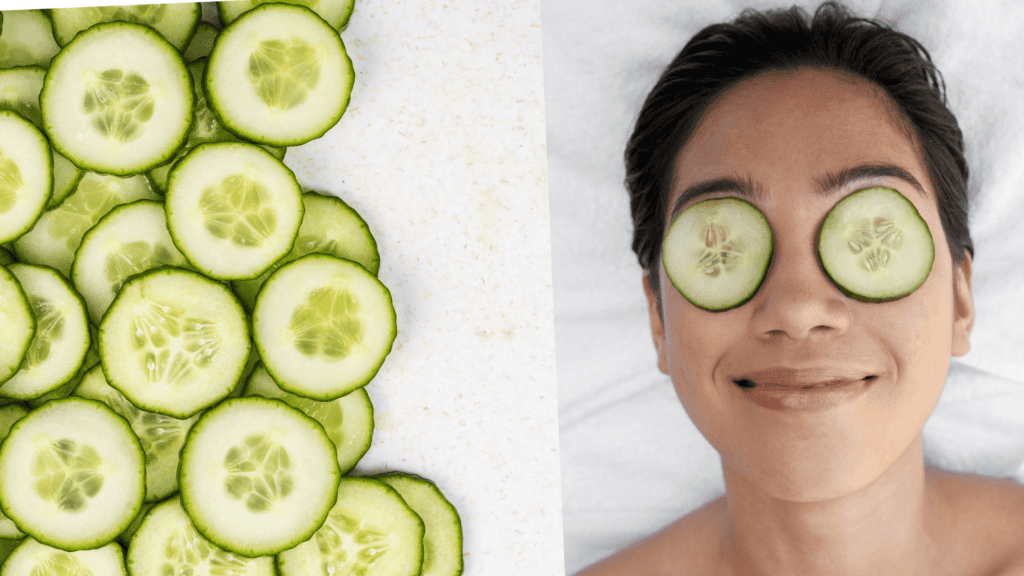Grey hair is, for most people, inevitable as we age. While there is an increasing movement to embrace the grey and discover the beautiful silver, white, and platinum colors that can emerge, there are plant-based options for those wishing to keep their original color without resorting to chemical dye.
Indigo can deliver a range of brown shades to even the whitest of roots, but there is a process. Once you have mastered it, you are well on your way to having a rich, vibrant, natural hair color that is simple to maintain.
What is Indigo Hair Dye?
Indigo is a rich, deep blue dye obtained from the plant Indigo Tinctoria. In Ancient Greece and Rome, the imported pigment in cake form was known as Indicum, i.e., from India, hence the name we now know, Indigo.

Indigo dye was widely used in textiles; think Indigo blue jeans. It also has excellent effectiveness as the coloring agent that turns the orange color of Henna to a range of light brown through to the deepest blue-black color, depending on the ratio you use. Make sure to buy high-quality organic Indigo to get the purest product.
The crushed dried leaves of the indigo plant are finely sieved into a silky green powder; when mixed with water, the mixture oxidizes and forms a blueback dye. Indigo is alkaline, which is softening to the hair. It complements Henna, which are acidic and strengthen the hair; together, they can turn your hair into a wide variety of brown shades with no damage.
Can You Color Grey Roots In Your Hair With Indigo?
Grey roots in your hair are easily covered using Indigo, but you have first to understand how Indigo works. Indigo covers grey bases, but only if the hair is treated with Henna first, in a two-step process.
Henna [Lawsonia Inermis] is a plant whose leaves are dried and finely milled into a powder to make a vibrant orange/red color pigment. When mixed with water or liquids like coffee or tea to form a paste, Henna becomes an effective hair dye that has been in use across the ancient world for thousands of years.
Henna likes to adhere to hair, whereas Indigo likes to stick to Henna. You may need to use several treatments of Henna and Indigo to get the desired result, especially on hair that hasn’t been treated with Henna before. This is easy since Henna and Indigo do not harm the hair but strengthen and condition it, unlike chemically made dyes.
Henna is vibrant and produces a bright orange color on pale or grey/white-toned hair, but it can be too intense in color for what most people want. To achieve varying shades of brown, mix Henna with Indigo. Depending on the ratio, this will tone down the color to a warmer auburn, rich brown, or even black.
Buy organic Henna whenever possible, as it can be adulterated with heavy metals and salts. You want a pure, clean Henna for the best outcome.
If your hair only has a few strands of grey, you can achieve subtle red/orange highlights on brunette or brown hair with a mixture of Indigo and Henna.
If hair is predominately white or grey, use a two-step process.
Two-Step Indigo And Henna Process For Grey Roots.
1. First, color the grey roots of the hair with Henna; the instructions will be on the packet. The Henna must be mixed up and left to dye release for 12-24 hours.
After application, cover the hair in a toweling hair wrap to keep the Henna moist. Wrap the hair in a plastic shower cap or old grocery bag/cling film. We love these made of Bamboo fiber.
Leave the Henna on the hair for two hours and rinse in warm water. Do not shampoo. A gentle conditioner bar can help to speed up this process. Conditioner bars work well to get Henna out of the hair; choose a moisturizing one with natural ingredients, as Henna can be quite drying.
Leave your hair to dry overnight if you can, and let the Henna oxidize for 72 hours before applying an Indigo or a Henna/Indigo mix. Most people can’t walk around with bright orange roots for this long time. I recommend doing the Henna process at night and the second step, the Indigo process, the following day. I have found this to work well.
2. Color the hair with a mixture of Henna and Indigo. There is a lot of trial and error in this process, but you will soon become entirely instinctual about the ratios of each for your particular needs. The more Indigo you use, the darker brown color you will get. If you want black hair, use Indigo alone at this step.
- For Black hair, apply Indigo only.
- Dark brown hair – 50/50 ratio
- Lighter brown hair – Use two parts Henna and 1 part Indigo.
Leave on the hair for up to two hours. Rinse out with a gentle conditioner or bar; again, do not shampoo at this stage.
Let the hair process for 72 hours, and shampoo in a mild natural shampoo or shampoo bar. Make sure to use a non-stripping shampoo, but clean your hair thoroughly to avoid a build-up of Henna and Indigo from clogging the hair follicles. Please read this post on our recommended shampoo bars.
You may have to repeat this process to build your desired color, especially if your roots are white. Henna works as a gloss; it adheres to the hair without penetrating the shaft and doesn’t cause any damage.
If you repeat the process, mix Henna and Indigo; there is no need for the two steps; that is only applicable when you start with white or grey roots.
How Care For Grey Roots Dyed With Indigo/Henna!
Hair dyed with Henna and Indigo gives long-lasting, vibrant color without the damage of more commercial options, but you still need to take care of it to maintain the look and feel of the hair and the vibrancy of the color.
- Wash;
Wash hair in mild, gentle natural shampoo with ingredients like Aloe and Amla that revive the texture of Henna-treated hair.
Or shampoo bars compatible with Henna; you want nothing harsh that will strip the hair of its color. While Henna is a semi-permanent hair dye, it does fade over time.
- Condition;
Condition the hair with natural conditioners with herbal ingredients to soften the hair. Henna can be quite drying, and Indigo slips easily from the hair, primarily if you use a lot of oil, so the right conditioner is vital.
Conditioner bars work well to get Henna and Indigo out of the hair, as you can rub them through the scalp, loosening the drying paste quickly and easily.
Concentrate the conditioner on the hair shaft, not the roots, to avoid pulling too much color from the hair and fading it.
As you make repeated applications of Henna/Indigo, the color will be firmly set, but be gentle with newly done roots.
- Herbal Hair Masks;
Another way to take care of the roots of grey hair dyed with Henna/Indigo is to make natural hair masks from Ayurvedic herbs like;
Add a teaspoon of these powders individually or together to liquid natural conditioners or hair masks. You can also add a teaspoon of Henna Or Indigo to these masks, which will help strengthen and revive the color of the hair.
Make the famous Thali Kerala ayurvedic herbal hair mask for strength and nourishment!
Conclusion.
Plant-based hair dyes like Indigo are a fantastic way to color hair without harmful chemicals; they are easy to use and do not damage the hair. There is a slight learning curve to getting the process correct for how you want your hair to look; it soon becomes effortless.
Take inspiration for the right products to use, and you will soon naturally have gorgeous, vibrant colors!
Read this post here for more tips about using Henna and Indigo.
This post contains affiliate links; if you purchase through these links, we may earn a small commission, which will not affect your sales.
Glowitgreen.com is a member of the Amazon affiliate link program.




